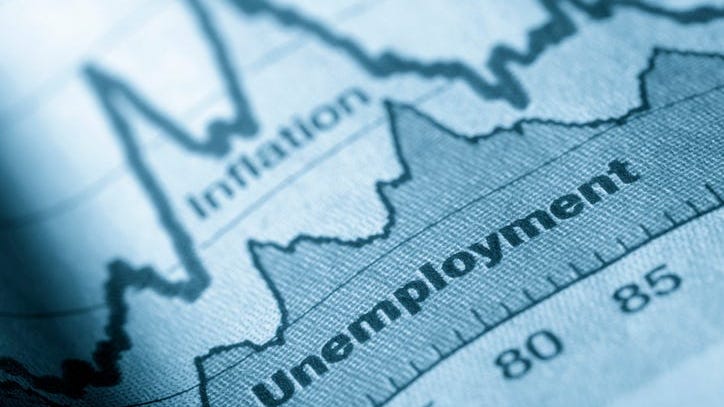
An ongoing debate over whether ending pandemic unemployment assistance benefits leads to more, or no change in, job gain has been lingering the past few months. Here is where it stands now.
Background
Federal pandemic aid increased unemployment benefits to $300/week and extended them for up to 18 months. Democrats were strong proponents of extending these added benefits through September, and included the extension in their March $1.9 trillion pandemic aid package, as they believe that financial assistance is needed as long as the pandemic continues. Republicans, on the other hand, opposed the extension because they believed that added assistance incentivizes workers to remain unemployed, especially if they are gaining more money from unemployment assistance than they would be at their pre-pandemic jobs.
In April, the Labor Department released a report in which it found considerably less job growth than expected. On this basis, Republican states began terminating the benefits early. Up to date, 25 states have ended said benefits as well as other pandemic-era unemployment programs – including those for gig and self-employed workers.
Concurrent to these conversations was the easing of restrictions for many industries, which aided in accelerating job recovery. As many businesses and sectors began reopening, the need for labor became abundantly clear. What followed was the realization that workers did not want to come back to their jobs, even if they could operate normally again. So what was the reason? While sidelining many other issues at hand, many focused solely on whether pandemic unemployment benefits were to blame.
Data
A hoard of contradicting data has come out on the topic since.
While a Wall Street Journal analysis found that states that ended the enhanced benefits early have seen about the same job growth as states that continue to offer them, Labor Department data shows that nonfarm payrolls rose 1.33% in July from April in benefit-lacking states, while rising 1.37% in offering states; a note, however, is that the April to July period preceded any governor’s decision to end or reduce benefits.
State-level comparisons maintain that benefit-lacking states have seen roughly the same job growth. In comparing Texas (benefit-lacking) and California (benefit-offering), for example, Texas saw a 1.45% payroll growth in the same period that California saw an increase of 1.73%. For Arizona (benefit-lacking and New Mexico (benefit-offering), the numbers were 2.63% and 2.50% respectively.
What is known for certain is that, while employers added almost 950,000 jobs nationwide in July, there were still 5.7 million fewer jobs that month than in the immediate pre-pandemic era.
Opinions on the matter continue to differ
Economists who have analyzed government data on their own have found that job growth rates in both groups of states are statistically about the same. According to University of Chicago economist Peter Ganong, for example, “If the question is, ‘Is UI the key thing that’s holding back the labor market recovery?’ The answer is no, definitely not, based on the available data.”
Other economists, however, caution against concluding that current data confirms that terminating benefits has no effect on employment. This can be attributed to 2 major reasons: 1) it may be too early to confirm such an effect and, 2) other developments – such as the loosening or tightening of restrictions due to the pandemic’s ebb and flow – may be tainting the actual impact of the benefits’ termination.
For example, economists at Goldman Sachs have found clear evidence that “benefit expiration increased the rate at which unemployed workers became employed” based on workers’ behaviors after adjusting for age, gender, marital status, education, household income, industry and occupation of a respondent’s current or prior job. They estimate that, if all states had terminated benefits, July payroll growth would have been 400,000 stronger. Additionally, they project the nationwide benefit termination this month to account for 1.5 million job gains through the end of the year.
One thing for sure is that economists have come to generally agree on the fact that other factors are to blame for lagging job growth. These factors include:
- Family-care responsibilities
- The closure of educational facilities
- A disconnect between jobs available and workers’ location and skills
- A fear of Covid-19
- And employee retirement
These factors have caused workers to change positions, professions, hours, or even drop out of the workforce completely. Now, the fate of job growth depends on whether these factors will persist, decrease, or remain the same.
By early next week, over 11 million individuals will lose some iteration of federal unemployment benefits according to Oxford Economics; this is compared to the 3.5 million that lost them this summer after states cut them.
Founded by attorneys Andreas Koutsoudakis and Michael Iakovou, KI Legal focuses on guiding companies and businesses throughout the entire legal spectrum as it relates to their business including day-to-day operations and compliance, litigation and transactional matters.
Connect with Andreas Koutsoudakis on LinkedIn.
Connect with Michael Iakovou on LinkedIn.
This information is the most up to date news available as of the date posted. Please be advised that any information posted on the KI Legal Blog or Social Channels is being supplied for informational purposes only and is subject to change at any time. For more information, and clarity surrounding your individual organization or current situation, contact a member of the KI Legal team, or fill out a new client intake form.
The post The Debate Over Whether Ending Unemployment Benefits Leads to More Job Gains Continues appeared first on KI Legal.
